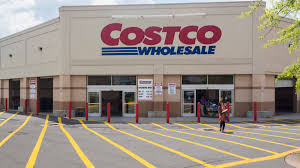Customer Retention Strategies That Work (Top 25)

Customer Retention Strategies that Work: Depending on the industry, acquiring a new customer can cost anywhere from five to twenty times as much as keeping an existing one. Despite this, strategies focused only on attracting new customers tend to take precedence.

Casting a wide net when fishing is effective, but relying on one-time customers won’t keep a business afloat. Therefore, in this essay, we will discuss 25 proven methods for retaining existing customers.
Customer Retention Strategies that Work – FAQs & Answers
Here are a few questions on the topic – Customer Retention Strategies that Work:
Why is customer retention necessary?
According to a number of studies, efforts made by businesses to keep their existing customers are both more profitable and require fewer resources than those made by those businesses to acquire new consumers.
How can I determine my client retention rate?
CRR = ((E-N)/S) x 100 is the formula, where “S” stands for starting customers, “E” stands for consumers you end a period with, and “N” stands for new customers earned within that window. “S” stands for starting customers. In order to calculate the percentage, you just multiply the value by 100.
Which customer retention strategy is right for my business?
Which strategy for retaining customers would you implement now that you have access to such a comprehensive list of viable options? There is no one method that will be successful for every company; nevertheless, if you keep the requirements of your customers in mind at all times, they will be more than eager to make purchases from you whenever they have the opportunity.
What is customer retention?
Customers that purposefully purchase your goods or services more than once throughout time are considered to have a high customer retention rate. In the end, a single, devoted client who makes multiple purchases over the course of a year has more influence than many customers who make a single, one-time transaction. If you prioritise maintaining the loyalty and satisfaction of your current customers, you can count on their business far more than you can on that of a new one.
Why customer retention Matters
You’ll probably discover a product made by a well-known brand, a company that is at the top of its field, if you glance around your desk or room. It is unlikely that it could have achieved such a position by depending nearly entirely on one-time purchases made by passing consumers. After all, repeat consumers make cumulative purchases worth 67% more than new ones.
Successful client retention denotes exceeding or exceeding expectations to a remarkable degree. Customer retention is important since it is the cornerstone of rising profits and helps you establish yourself as a leader in your field. These ideas are crucial for developing business continuity plans for your organisation.
Understanding Your Customer Retention Rate (CRR)
Customer Retention Rate (CRR) is a key metric that measures the percentage of customers who continue to do business with a company over a certain period of time. It is a critical indicator of customer loyalty and satisfaction, as well as the effectiveness of a company’s customer retention strategies.
To calculate CRR, follow these steps:
1. Determine the time period:
Decide on the time period for which you want to calculate CRR, such as a month, quarter, or year.
2. Identify the starting and ending customer counts:
At the beginning of the time period, note the total number of customers you had (let’s call it “Cstart”), and at the end of the time period, count the total number of customers you retained (let’s call it “Cend”).
3. Calculate CRR:
Use the following formula to calculate CRR:
CRR = ((Cend – Cnew)/Cstart) x 100
Where: Cend = Total number of customers at the end of the time period Cnew: Number of new customers acquired during the time period Cstart: Total number of customers at the beginning of the time period
4. Interpret CRR:
CRR is expressed as a percentage. A higher CRR indicates a higher rate of customer retention, which is generally considered desirable. For example, if your CRR is 80%, it means that you retained 80% of your customers during the time period.
Why is Understanding your CRR important?
Understanding your CRR is important for several reasons:
- Customer Loyalty: CRR helps you assess how well you are retaining your existing customers, which is a critical factor for building customer loyalty and repeat business.
- Customer Satisfaction: A high CRR suggests that your customers are satisfied with your products or services, as they are more likely to continue doing business with you.
- Business Growth: Retaining customers is often more cost-effective than acquiring new customers. A high CRR indicates that you are able to retain a significant portion of your customer base, which can contribute to sustainable business growth.
- Performance Evaluation: CRR can be used as a performance indicator to evaluate the effectiveness of your customer retention strategies and initiatives. If your CRR is consistently low, it may signal a need to review and improve your retention strategies.
Understanding and monitoring your CRR is essential for gauging customer loyalty, identifying areas for improvement, and driving sustainable business growth. By implementing effective customer retention strategies and measuring your CRR regularly, you can strengthen customer relationships and boost your overall business performance.
Read: What Companies are in the Customer Services Field?
25 Customer Retention Strategies That Work
Here are the top Customer Retention Strategies that Work:
1. Build Customer Loyalty Through Shared Values
The first of the Customer Retention Strategies that Work is to build your customer loyalty through shared values.
Is your company eco-friendly? Do you give back to a certain organisation by giving a portion of your income? Does it have more to do with youth and the TikTok generation? Your business should have clear, distinguishable ideals, and you should work hard to communicate those values to your clientele. Customers are more likely to develop a sense of loyalty and identification with a brand whose values they share.
2. Regularly Request Feedback
The second of the Customer Retention Strategies that Work is to regularly request feedback.
Even if the response is not what you would wish for, do not be afraid to ask your consumers how you are doing. Even though receiving favourable feedback is satisfying, the negative input is frequently more significant. Customers won’t repurchase from a company if they are unsatisfied. When surveyed, these unsatisfied consumers are asked why they choose to leave, and their responses should assist to improve the subpar service, making it simpler to keep clients in the future.
One thing to avoid is utilising the findings of one survey or poll indefinitely. The requirements and desires of consumers vary as the times do. Consistently ask questions and assess the nature of the most recent answers in relation to earlier feedback requests.
3. Get Clients Excited About a Change—Or The Choice Not To
By changing things up, you may reenergize your consumer base if the proportion of repeat consumers declines as a result of brand fatigue. Giving your business or website a makeover might be all it takes. Customers may still feel as though they are visiting a new store even though your brand has not altered beyond appearances. If you change too much or too quickly, you risk losing clients.
4. Treat clients Like People, Not Data
It is no secret that customers dislike AI chatbots since one of their main gripes is that the bots don’t comprehend them. Instead of the unique human experience, AI often responds to phrases and certain events. They are unable to provide the empathy that a consumer would need and can only obtain while speaking to a human. In light of this, it’s critical to keep in mind that consumers are individuals, not numbers.
Through direct and sympathetic contacts with clients, you acquire the most precise understanding of their contentment or unhappiness. Analysis may help you comprehend things hypothetically. Customers want to feel understood and linked to. Treating customers like real individuals rather than simply computerised data might greatly increase the likelihood that they will make more purchases from you.
5. Be understandable
It is simple to believe that supremacy will follow from having the finest product on the market, but this isn’t always the case. Because clients find their explanations and marketing materials simpler to grasp, a competitor may outsell your firm even with a subpar product. In the end, the easier you make it for people to understand the nature of your firm, the quicker they can determine if they want to do business with you.
An too complicated explanation could turn customers away, but those who are certain that your company meets their demands will feel more at ease making repeat purchases from you.
6. Build trust with your customers
When it comes to increasing client confidence in your business, two things are true: Don’t think that just because they buy from you, they trust you & Building trust takes time.
81% of consumers agree that trust plays a significant role in their choice to make a purchase. No firm can deploy a universal strategy to build trust over night. After all, the definition of trust is a “firm belief in the reliability, truth, ability, or strength of someone or something.” Your business should continually provide clients with value since reliability is a crucial component in developing trust.
Customers’ perceptions of your brand’s credibility will depend on how consistently you keep your word and carry out your commitments over time.
7. Keep a calendar for customer communications
Your staff should be aggressive in reaching out to your consumers even if they aren’t providing feedback. Reach out and rekindle your relationship with consumers if they haven’t connected with your business in a while. To manage client interactions and generate possibilities for upselling and cross-selling, take into consideration using a communication calendar.
A calendar that records client communications is known as a communication calendar. It notifies you when an existing consumer last interacted with your brand and lets you know when that interaction occurred. This makes it simple to roll out marketing campaigns and proactive customer care initiatives that eliminate obstacles before clients even realise they exist. You might inform customers through email that they need to renew their accounts, for instance, if their membership is about to expire.
8. Provide options for prompt delivery
Some clients may need or desire an item right away, although many customers wait a few weeks to obtain a product. Because they know they can acquire things from your business faster than they could from your competitors, offering the opportunity to get anything days or weeks sooner may motivate certain consumers to return.
9. Make refunds and returns simple and fair
Even if mistakes happen, making returns exceedingly impossible and refusing to issue refunds is one method to guarantee a consumer never purchases from you again. One aspect of customer care is the returns and refunds procedure. Making the procedure rational and painless is therefore essential. Customers will trust you with their future purchases if they believe you will treat them appropriately after the transaction rather than ignoring them once you have their money.
10. Send out a business newsletter
A corporate newsletter may improve your firm’s brand and notoriety, making it an easy and affordable approach to keep consumers. You may send updates or offers to all of your clients at once by using email automation. Additionally, you can schedule the frequency at which the email is sent using an RSS feed, eliminating the need for manual content updates and the need to remember to hit “send.” Despite being straightforward, newsletters may serve as constant brand reminders for customers.
11. Start a customer education program
A customer education programme shows that you are committed to your client base over the long run. As part of this programme, your company develops a number of client self-service resources, including a knowledge base and a discussion forum. Then, before contacting your support staff, clients utilise these capabilities to find answers to service-related issues.
12. Offer unique services
It’s not simple to provide a good or service that your consumers see as better than those of your rivals, but the payoff is ultimately worthwhile. You’re on the right track to keeping clients if you’ve created a market niche for your company that addresses a significant customer pain issue.
In the end, people buy things that are valuable to them. A compelling argument for a client to stick with your brand is the elimination of a bottleneck, smoothing up a workflow, or automating a process in a way that no other firm can.
13. When you make mistakes, apologise
Despite your best efforts, mistakes still occur in business. Depending on how you respond to a mistake, whether it be a data breach, an outage, a billing problem, or something else, you may lose your loyal consumers.
14. Offer Direct and Empathetic Customer Service
Some businesses have a reputation for providing poor customer service. The difficulty of directly speaking with a representative is a significant one. For instance, it can be because clients have trouble navigating to the right department or because AI chatbots and phone services are overused.
Customer retention is based on providing excellent customer service. Empathetic, simple, and straightforward customer service may go a long way towards assisting you in building enduring, rewarding relationships with customers.
15. Make use of personalization
People are the top concern when it comes to personalisation. Customers want to be treated like individuals through personalised advice and services, but they also want to see that your company is human.
16. Build a Customer Profile
Instead than concentrating on getting new consumers, you may attract individuals who are more likely to join your loyal customer base by creating a profile based on your current, long-term customers. Consider all the similarities between your retained customers. Try to comprehend what sets them apart from occasional buyers.
Age, income, gender, and lifestyle data may be essential for more effective marketing to customers who are most likely to make repeat purchases from your business.
17. Utilise gamification to maintain customer interest
Gamification, which capitalises on consumers’ need to feel involved and rewarded beyond a single purchase, is an essential customer retention tactic. Retail establishments apply gamification by converting the money spent in their businesses into points that can be used for future purchases. This strategy gives a consumer a compelling reason to buy from you again since the money they spent yesterday now qualifies them for a discount on tomorrow’s purchase.
18. Educate your customers
Simply because a consumer has bought something from you doesn’t mean you should give up on closing the sale. Go above and beyond and provide them with something priceless, like a free educational programme, as they have more alternatives than before.
19. Include support for the appropriate platforms
Knowing where your customers spend their days using your product and how they like to receive customer assistance when they have questions or concerns is an important part of knowing and understanding your consumers.
20. Before a consumer may cancel their subscription, provide incentives
Each of us has experienced this situation before. Your free trial period, annual membership, or discounted rate is about to end. To stop being charged again, you’ve set an alert. Companies like Adobe are aware of this all-too-common churning method and have taken precautions to counteract it.
21. Become part of the customer’s lifestyle
You have the capacity to transform your organisation into something that motivates your target market and makes them desire to be affiliated with your brand. You have the ability to incorporate your product offering into their way of life.
22. Create brand loyalty by offering a product that is unlike any other
In a market that is saturated with rivals, how can you ensure that previous consumers continue to use your services? by providing something that cannot be duplicated under any circumstances.
23. Create a group of people that are interested in your product or service
Creating a following for your product or service might inspire potential clients to purchase it so that they can take advantage of the benefits it offers.
24. Thank your customers
In continuation of the previous point, taking the time to really express gratitude to one’s clientele on an individual basis, apart from the context of a marketing campaign or a transaction, contributes significantly to the development of a brand that is endearing and easy to recall.
25. Becoming challenging to replace
The last of the Customer Retention Strategies that Work is to become challenging to replace.
Being positively distinctive and extremely difficult to duplicate can be an excellent client retention tactic. After all, it is simpler to retain clients when they are aware that they will find it difficult to reproduce their great brand experience elsewhere in your sector.
Conclusion
Depending on the sort of business you run, certain strategies could be more effective than others. For instance, a brick-and-mortar presence vs. an internet store. It’s crucial to create the appropriate client retention strategy for your company. Whether you create a profile, embrace gamification, or completely revamp your customer service, these actions are crucial for enhancing the client experience. Customers who are pleased return; those who are not pleased do not.
That is it on Customer Retention Strategies that Work. Please share.
Recommended:
Ways to Build Customers Loyalty (All You Need To Know)
How to Build a Successful Referral Program for Small Businesses




